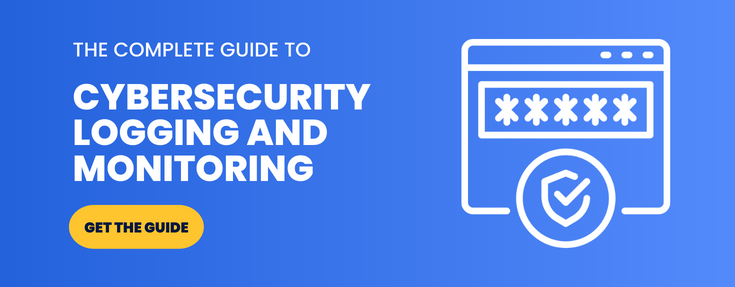What is logging as a service

 By
Jason Miller
·
3 minute read
By
Jason Miller
·
3 minute read
All IT and cybersecurity teams are going to be very familiar with logs, an essential yet cumbersome part of any troubleshooting and root cause analysis process that can be difficult to manage. From difficulty in organizing them to trouble with accessing them, managing logs and finding them when needed can get in the way of the work your team is supposed to be doing. Logging as a service offers a potential solution to those logging management woes, but what is it, what are the benefits, and how can managed service providers help with it?
What is logging as a service?
Logging is a service is a model designed to be built into your digital infrastructure with the primary function of collecting and centralizing log files from any source or origin, whether they’re built to ingest and store logs from one particular application, or from all systems, servers, and devices. As such, this gives you one central database where you can quickly find whichever logs you need.
From collecting logs from different operating systems, containers, network devices, and other custom events, LaaS centralize all logs into categorized modules, making them easier to access and more visible, meaning that users don’t have to travel from one server to another to find logs. Indexing also enables users to search for any log by relevant terms. LaaS also searches and analyses the logs to monitor large volumes of data, with the ability to alert users when necessary.
Logging as a service allows you to manage and display all relevant logs, generating log feeds and alerts for users from a single centralized source that you can search through at will, before ultimately disposing of those logs.
The benefits of implementing logging as a service
Logging as a service can help any organization better manage the plethora of operational data generated by and sorted in software components, providing better access to essential information about stability, performance, and security of the different systems implemented in your infrastructure. However, it also has a few specific benefits that are worth outlining:
- Collection and centralization: With multiple services running on a variety of services, logging as a service makes it much easier to search for the appropriate logs by gathering them all in one interface. Furthermore, logging as a service can help you bypass inaccessible and gated logs, meaning you’re not kept from the information most valuable to your organization.
- Formatting consistency: When dealing with logs individually from different sources, it’s easy to get lost in the mire of different formatting standards and layouts. Logging as a service can identify common formats, taking the relevant information and presenting it in a consistent manner that can help you filter certain events and analyze trends, even amongst logs from entirely different services.
- Alerting from every source: You can define key stability or security anomalies that your logging as a service system is able to detect, sending timely alerts whenever they are found. Logging as a service can also automatically detect anomalies and new trends, sending an alert to the IT team or DevOps, allowing them to respond to issues before they have the opportunity to grow.
- Total security and reliability: Logging as a service ensures that your log files are not lost to the mists of time or in the hands of the wrong users. LaaS systems come with per-user access control options, automatic backup functions and archives of historical data meaning that it’s always easy to find the log you need, even if it’s no longer available at the original source, so long as you have the access permission you need.
- Optimize your data analysis: Logging as a service systems often allow you to better analyze data with more visualization options, helping you answer questions regarding trends, ensure SLA compliance, and more effectively and efficiently identify and tackle anomalies.
How managed service providers can help with your log management
Log management systems can be incorporated into your IT infrastructure manually, but managed service providers are able to provide it as logging as a service. In this case, rather than taking up your own resources to collect and host log data, it’s all centralized on the Cloud, made accessible from any device so long as the user has the appropriate login details and access levels.
Cloud-based solutions from MSPs also allow you to simplify management and use the system flexibly from a range of systems, often with no need to install any proprietary agents to gain access to all that valuable log data.
Besides providing the essential log management to help you streamline the process of collecting and analyzing your log data, logging as a service from managed service providers also means you gain access to complete log retention without the need to handle the burdens of management and maintenance on your own.
Managed service provides allow you to allocate critical engineering resources to processes besides log management and can help you cut the costs of having to set your own logging systems up. Furthermore, with pre-made logging as a service system ready to roll out, MSPs can dramatically reduce the amount of time it takes to have your centralized log storage set up.
The scalability and flexibility offered by managed service providers is another significant advantage. In-house logging systems can be unreliable, as the volumes of log data gathered can fluctuate greatly. MSPs ensure a service that’s able to handle any quantity of logs that can scale up when necessary yet scale back down to keep your services cost effective.
Implementing logging as a service into your organization
Log management is crucial for any businesses who have to handle large volumes of log data from multiple sources. Logging as a service allows you to partner with a managed service provider who can offer the centralized, formalized database of data you need, but without the work that it takes to set up your own log management system and without using the resources you might be able to better devote to other processes.
